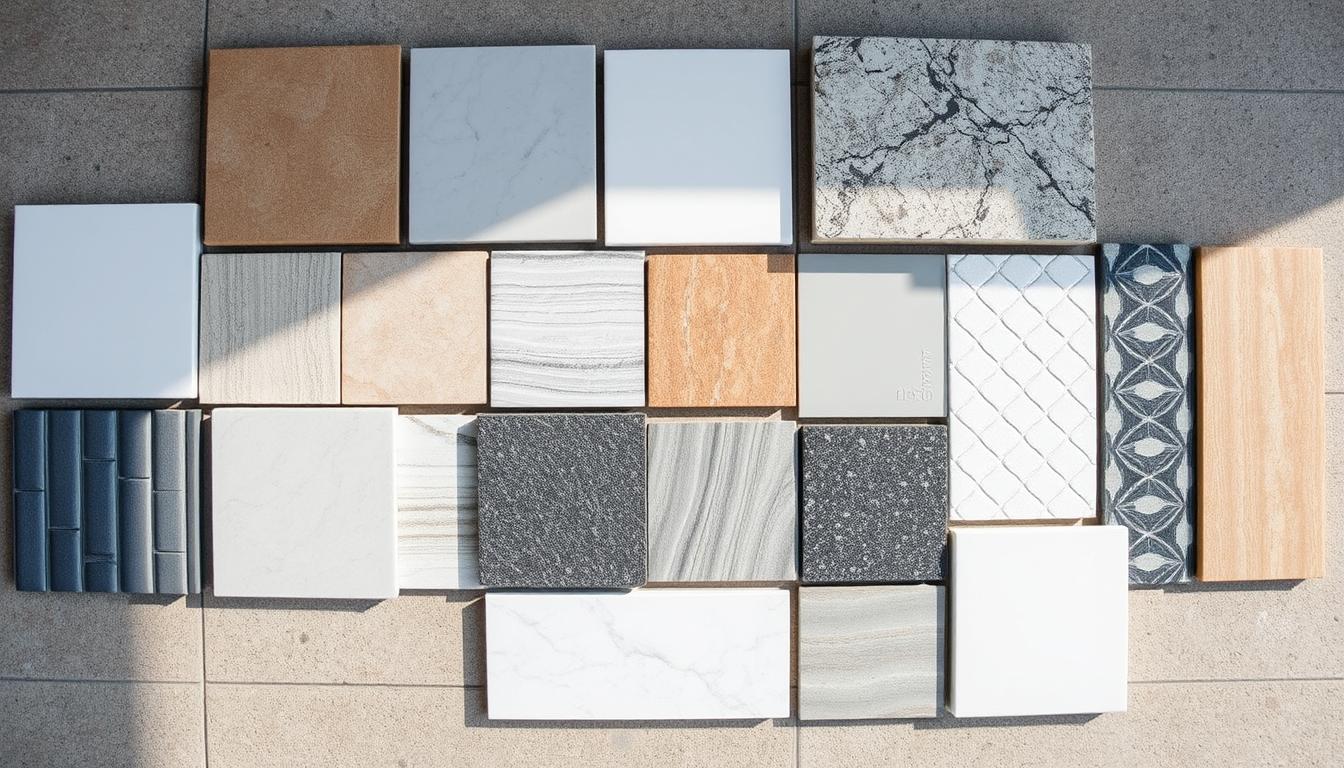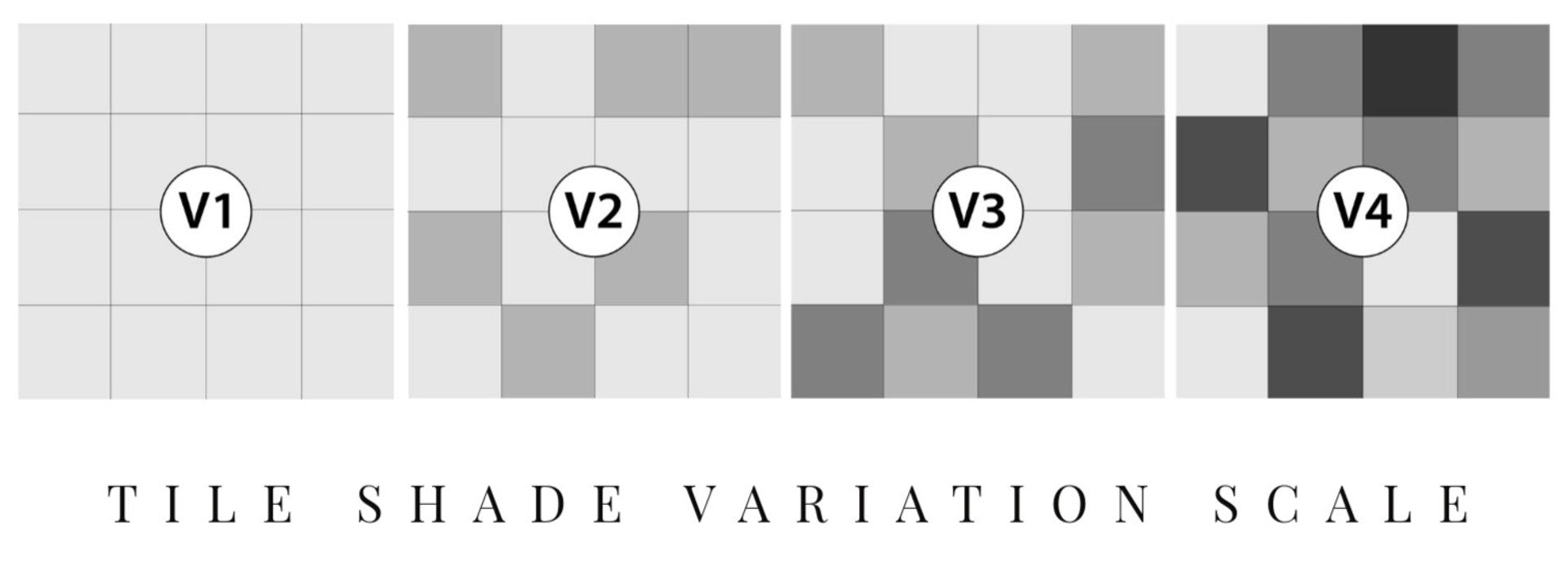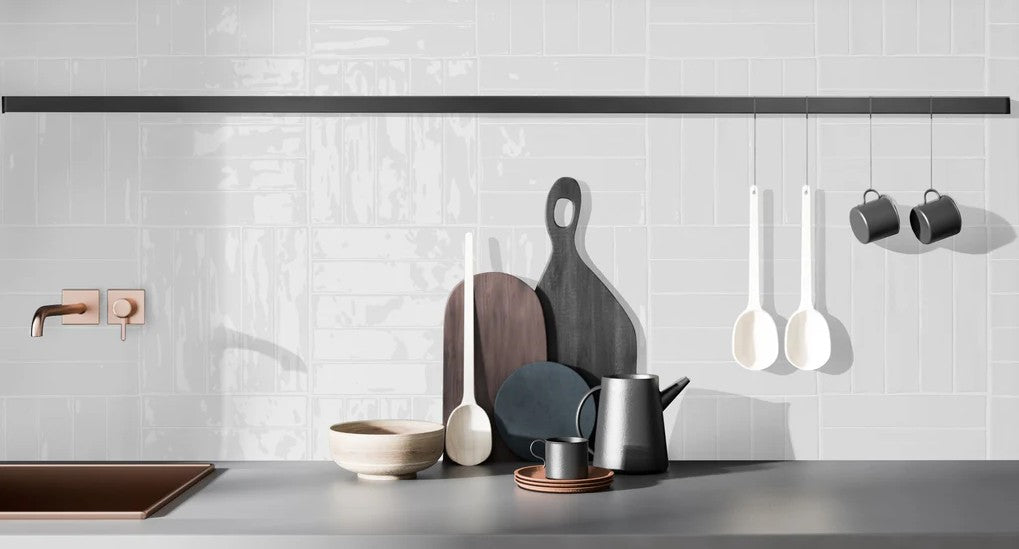Ever felt lost in a tile store with all the sizes and measurements? I did. At first, nominal tile sizes seemed like a secret code. But don't worry, this guide will clear it up for you.
Nominal tile sizes look friendly on the box but hide a secret. They're not the real size you'll get. It's like a "grande" coffee that's not as big as you thought. Knowing this can save your project from trouble.
Let's explore nominal tile sizes together. We'll see why they matter, how they differ, and how to avoid problems. This guide is for anyone, whether you're a pro or new to tiling. It will help you make smart choices and get great results.
Key Takeaways
- Nominal tile sizes are approximate measurements, not exact dimensions
- Understanding the difference between nominal and actual sizes is crucial for successful installations
- Common nominal sizes include: 3" x 6", 4" x 4", 6" x 6", 12" x 12", and 24" x 24"
- Size variations can lead to issues like uneven grout joints and material shortages
- Adding 10% - 15% extra material when ordering can compensate for size variations
- Precise measurements are essential for complex tile installations
- Grout joint size recommendations can vary based on tile size and type
What Are Nominal Tile Sizes?
Knowing about nominal tile sizes is key for a good tile job. These sizes are important for planning and doing the work. Let's explore the world of tile sizes and why they matter in the tiling world.
Definition and Significance
Nominal tile sizes are the close-to-real sizes of tiles used for general talk. These sizes are vital for makers, builders, and homeowners. They help everyone talk about tile sizes in the same way.

Difference Between Nominal and Actual Sizes
Nominal sizes are not always the same as real sizes. For example, floor tiles can be off by up to 0.75% and still meet Australian standards. This small difference helps with fitting tiles together, like grout lines. Porcelain tiles need at least 1.5mm of grout space, as Australian rules say.
Industry Standards for Nominal Sizing
The tiling world has its own rules for nominal sizes. These rules make sure sizes are the same everywhere. Here are some common tile sizes and what makes them special:
| Tile Type | Standard Size | Characteristics |
|---|---|---|
| Cement Tiles | 8" x 8" (20cm x 20cm) | 5/8" thick, thinner options available |
| Mosaic Tiles | 300 x 300mm sheets | Pre-mounted on mesh or paper |
| Large Format Terrazzo | Up to 24" x 48" | Available via special order |
These standards keep tile sizes the same in all projects. Knowing about nominal tile sizes helps you choose the right tiles for your project.
Common Nominal Tile Sizes in the Market
Tile makers offer many sizes to fit different project needs. Square tiles are most common, ranging from 2 inches to 24 inches. Sizes like 4" x 4", 6" x 6", 12" x 12", and 18" x 18" are popular for floors and walls.
Rectangular tiles are also popular. They come in sizes like 1" x 2", 3" x 6", and 12" x 24". Wood-look ceramic tiles, which look like hardwood, are available in 6" x 24" and 8" x 32" sizes. They add warmth to any room.

Subway tiles are a classic choice. They come in sizes from 1" x 3" to 4" x 16". A combination of 3" x 12" white subway tiles with dark grout looks stunning.
| Tile Type | Common Sizes | Best Use |
|---|---|---|
| Square Tiles | 4" x 4", 6" x 6", 12" x 12" | Floors, Walls |
| Rectangular Tiles | 1" x 2", 3" x 6", 12" x 24" | Floors, Walls, Backsplashes |
| Wood-look Tiles | 6" x 24", 8" x 32" | Floors |
| Subway Tiles | 1" x 3", 3" x 12", 4" x 16" | Walls, Backsplashes |
When picking tiles, remember sizes can vary a bit. It's smart to buy 10% - 15% more to cover size differences and future repairs.
Factors Affecting Tile Size Variation
Tile size variation is key when planning your tiling project. Knowing these factors helps you pick the right tiles for the best look.

Manufacturing Processes
The way tiles are made affects their size. Porcelain tiles with rectified edges are cut very precisely, with only a 0.5mm tolerance. On the other hand, European standards allow up to 3mm tolerance for angled edges on porcelain tiles.
Material Properties
Different materials vary in size. Natural stone tiles like marble and limestone are cut to within 1mm accuracy. Flagstone tiles with tumbled edges can vary up to +-2mm, changing their size.
Rectified vs. Non-Rectified Tiles
Rectified tiles are more consistent in size. For example, porcelain tiles that are supposed to be 6" can actually be between 15/16" and 13/16", a 1/8" difference. Non-rectified tiles need wider grout lines because of these size differences.
| Tile Type | Size Variation | Recommended Grout Width |
|---|---|---|
| Rectified Porcelain | 0.5mm | 1.5mm |
| Non-Rectified Porcelain | Up to 3mm | 9mm |
| Natural Stone (Rectified) | 1mm | 3mm |
| Tumbled Edge Tiles | Up to 2mm | 6mm |
When picking tiles, think about the size you need for your space. Big tiles like 600 x 600mm for kitchens or 900 x 600mm for open areas make spaces look bigger. Also, better quality tiles usually have less size variation, leading to a more even and attractive finish.
Importance of Nominal Tile Sizes in Project Planning
Knowing nominal tile sizes is key for planning projects well. A good tile size guide helps figure out how much material you need. It also ensures tiles fit right, avoiding problems with uneven grout or gaps.
Ceramic tile comes in many colors, textures, sizes, and shapes. This makes it very flexible for design. Ceramic tiles can last 75 years or more if installed and cared for right.
- Porcelain tiles absorb very little water, less than 0.5%.
- Double loaded porcelain tiles have a 3-4mm decorative layer.
- Through body porcelain tiles show color all the way through.
Always measure actual tiles before you start. For example, 24"x48" porcelain tiles might not be exactly 24x48 inches. It's important to follow the manufacturer's advice on joint width and layout for a good job.
Knowing nominal sizes helps coordinate different tile sizes in complex projects.
It's important to understand size terms in the industry when picking tiles. Knowing the difference between LHT mortar and thinset is crucial. Also, knowing the differences between ceramic and porcelain tiles helps make better project choices.
Conclusion
Knowing about nominal tile sizes is key for planning and doing a project well. These sizes are a standard, but they don't always show the real size of the tile. The tile industry follows strict rules, like ANSI A137.1, to keep quality and looks consistent.
Nominal tile sizes affect many parts of building, like picking materials and how to install them. For example, rectified pressed floor tiles of 24 inches have a smaller allowed size range (±0.03 in.) than natural pressed floor tiles (±0.09 in.). Knowing this helps avoid problems and makes sure the job looks great.
Even though nominal sizes make talking and ordering easier, you should still check the real size before you start. This way, you can avoid expensive mistakes. Learning about tile sizes and what they mean will help you tackle any challenge and get amazing results in your tiling projects.
FAQ
What are nominal tile sizes?
Nominal tile sizes are close estimates used in the tile world. They are not the exact size. This way, tiles can be easily compared and planned for.
Why is it important to understand nominal tile sizes?
Knowing nominal tile sizes is key for a smooth project. It helps in figuring out how much material you need. It also makes sure tiles fit right and grout lines are even.
What are some common nominal tile sizes?
Common sizes include 1" x 2", 2" x 2", 3" x 6", 4" x 4", 6" x 6", 8" x 8", 12" x 12", 16" x 16", and 24" x 24". Some makers also offer 18x18" tiles.
What factors can cause tile size variation?
Size changes can happen during making, due to the material, or if tiles are rectified or not. Things like firing, cutting, and polishing can make tiles change size.
How much extra material should be ordered to account for size variations?
To cover size changes, add 10% - 15% more tiles. This is for any extra needed for repairs or size differences.
What is the difference between rectified and non-rectified tiles?
Rectified tiles have edges cut for evenness, needing little grout. Non-rectified tiles have natural edges, needing more grout.









